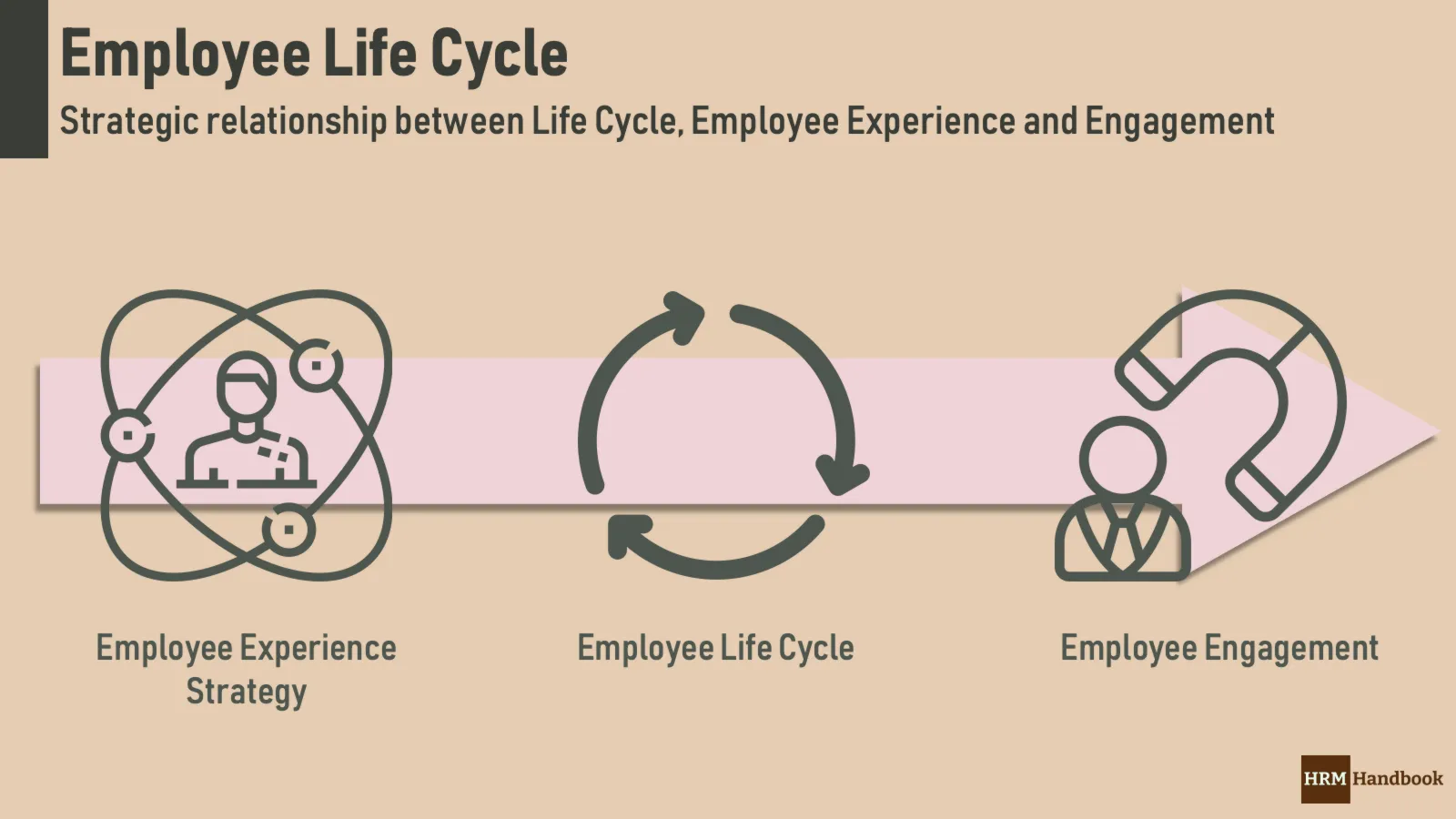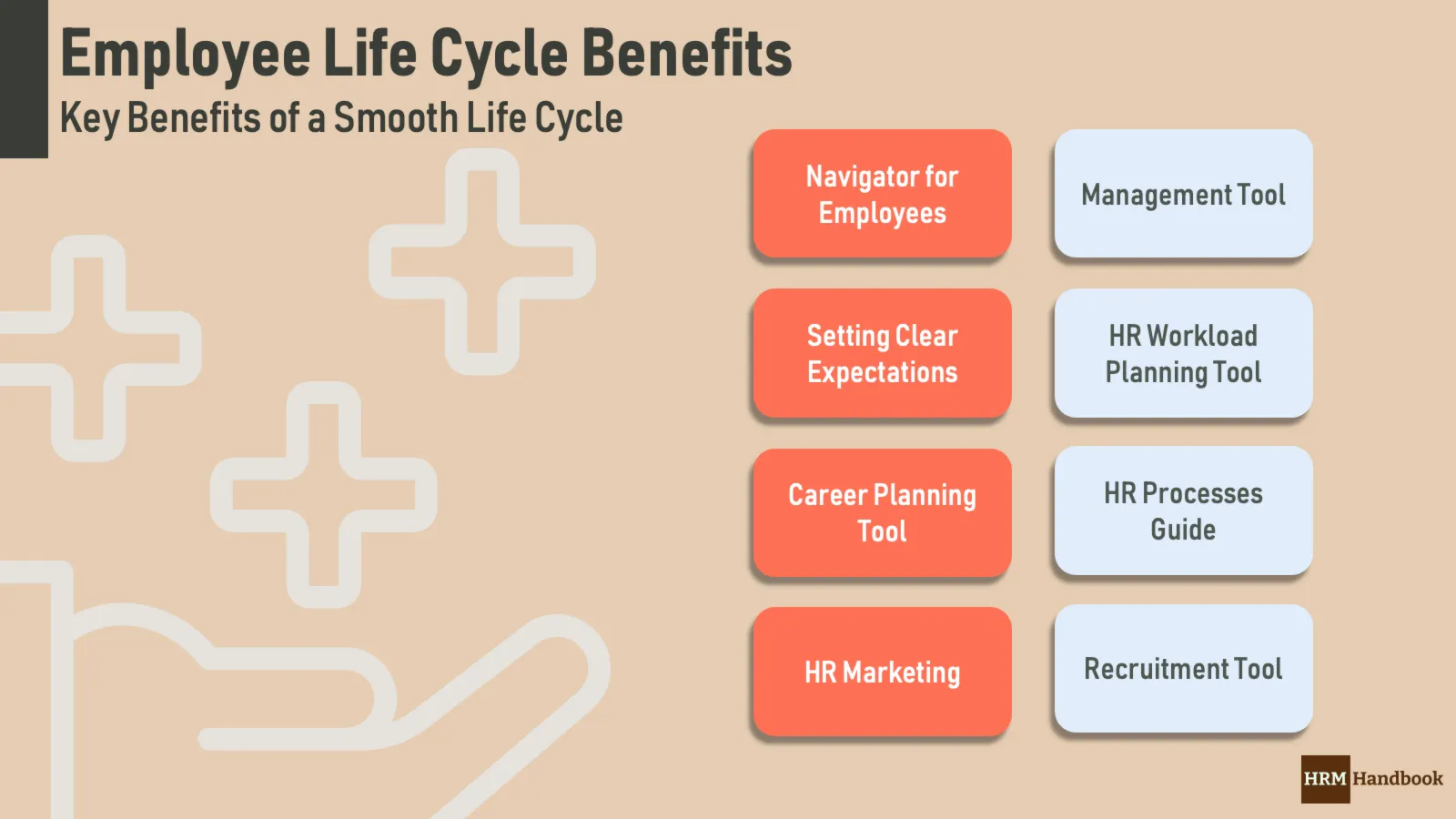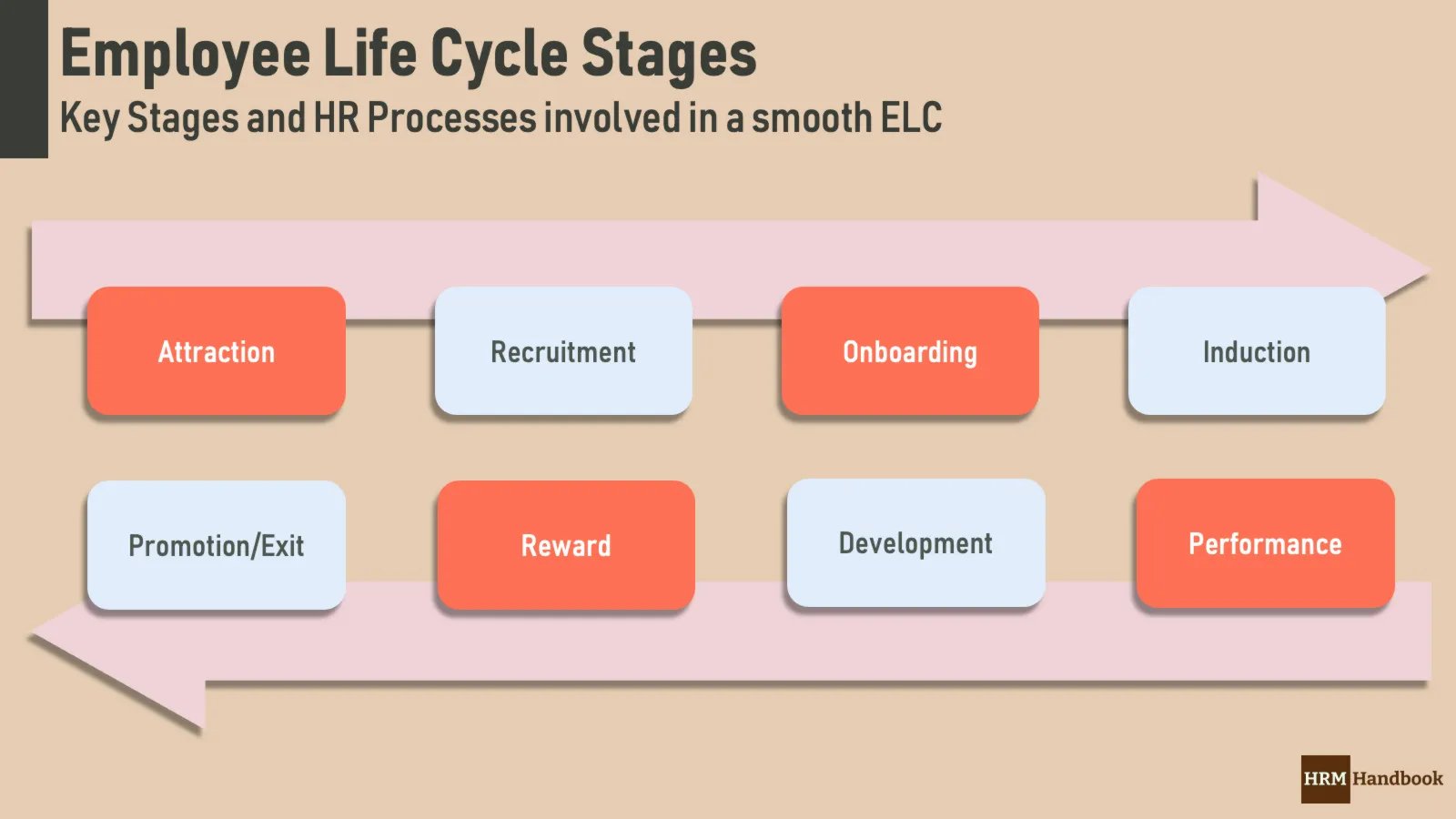Employee Life Cycle in Organisation
Whatever the future development, it will not change the fact that the basic and core role of Human Resources will always be to take care of employees end-to-end. To guide employees through the entire cycle in the company, from recruitment advertisement to termination. And it is the job of the HR department to make this long process enjoyable and provide an excellent employee experience. That’s what the Employee Life Cycle is all about.
Human Resources establishes, manages and administers a large number of processes, but they must always fit well in some way into the overall Employee Life Cycle picture. But it must also support the overall company culture and values. Without this, the process has no purpose and is useless. Unnecessary and inefficient HR processes destroy the overall good impression of employees and can cause a drop in productivity.
A positive Employee Experience and a high level of Employee Engagement are the two main ways Human Resources supports a company’s competitiveness today. A satisfied and engaged employee not only lends his/her hands to the company, but also puts his/her brain and heart at the disposal of the company. Emotional connection is always stronger than pure connection from reason.
Of course, there is also the option of focusing purely on job performance, but such an approach is hardly sustainable in the long run because there is no emotional bond between the company and the employee. With this, dissatisfaction to frustration builds up over time and the employee eventually leaves dissatisfied, even though he or she has had high performance and corresponding variable compensation components.

Setting the right mutual expectations from the outset is one of the conditions for a positive employee experience. If a company doesn’t clearly communicate how it works with its human capital, it can raise unrealistic expectations. A disappointed employee is usually unproductive and will leave the company sooner or later. If the employee knows what procedures and processes to expect and what he or she must do during the year and career, then there is no such danger. Ultimately, every employee appreciates when his or her life in the organization is relaxed and predictable.
The best companies put a lot of effort into making their Employee Life Cycle Strategy nice, clear and simple. They ask employees which processes are too complex and work to simplify them. They ask which components are missing and work to add them to the overall process so they don’t lose their best employees.
What is the Employee Life Cycle?
There is no one definition of Employee Life Cycle. Each organization approaches the methodology differently. However, it usually displays two approaches, from the employee’s perspective and from the line manager’s perspective. In some cases, the view from Human Resources is added, where for example Attraction processes are added.
It shows basic touchpoints with HR processes during employment. Some steps happen only once, such as Onboarding and Induction, but performance reviews, for example, happen regularly, often on a monthly basis. It helps the new employee understand the HR philosophy and highlights the processes that the company places critical importance on.

Simple visualization and visual explanation of the entire model is important because it reinforces belonging to the company. Employer Brand needs to be reinforced internally and externally and a simple picture is easy to understand and can be used as an illustrative example in the recruitment process.
Often the Employee Life Cycle is part of Induction training, where new employees get a basic overview of how the company works with employees. It sets mutual expectations and describes what the basic HR management processes are throughout the year.
Most often, it is a simple picture of the main steps, how they follow logically and how the deliverables build on each other. They allow you to quickly understand the company’s philosophy, its corporate culture and what behaviors are important for success.
What are the benefits of Employee Life Cycle?
Today’s Human Resources must also focus on perfect communication of their processes and tools. Without advertising and proper timing, many procedures will lose their charm. Employees expect HR Marketing to be very strong within the organization and can encourage enthusiasm and team spirit. And a good Life Cycle methodology can accurately predict what the themes of each quarter will be.
A good model also provides guidance to the HR team on how to set up processes. They need to be clearly linked to the model and build on each other logically. It sounds simple, but there is a great art to teaching processes to communicate with each other, use the same data and not overlap. The bigger the organization, the harder it is to coordinate things. In such a situation, a model is a very useful tool.

This simple methodology also acts as a compass and map for employees and managers. HR Managers sometimes feel that other employees are perfectly versed in human capital management processes, but this is not true. Employees are often groping about what to expect and what procedures await them. Employee Life Cycle quickly answers their basic questions about when in the year performance reviews take place. When they can expect a pay review and how it depends on other HR processes.
By the way, it’s also a great tool for managers. If they get their hands on a simple card, they can refer back to it as a tool to quickly explain to employees what procedures they can expect. What they need to do and what they can expect to get out of it.
What HR Processes and steps (stages) are usually involved?
Companies take different approaches, but often there are around six to eight steps in the Employee Life Cycle of an employee’s life in the organization. It just depends on how much detail the HR department chooses. And how broadly they think about their role in the organisation.
The incremental steps are:
- Attraction
- Recruitment
- Onboarding or New Hire Orientation.
- Induction
- Performance Management
- Development
- Reward and Recognize
- Promotion, Job Rotation or Exit
Employer Brand is an important HR process today. Previously, a company did not have to apply for employees because they came in on their own. However, times have changed and there is a struggle for the best talent in the market. A company must invest in its image in the job market, which is why Attraction is so important. Job seekers must think of a company as a good employer to be willing to send in their resume.
Recruitment is the next critical step in an employee’s life. Long gone are the long lines of interviews, the complicated psychological testing. Today, the speed and gamification of the entire recruitment process is important. This is where the new team member gets to experience first-hand what the company culture is like in the new organisation.

Onboarding is very important for the emotional bond between the company and the employee. It covers the first few days in the company, but plays a crucial role. The new person forms an overall impression and will talk a lot about it to people in their environment. He will share his first experiences with them and compare what is better and what is worse.
Induction is usually about a few weeks to months. The new employee learns how the company works and what it takes to be successful. It’s not just about job performance, that only plays a partial role. It’s about total involvement in the life of the team and the organism.
Performance Management is often forgotten. However, it is not just about maintaining high performance. It’s also about finding the right way forward. Good and effective assignment of tasks, goals and their fair evaluation. The company must help employees to develop and their added value to grow over time.
Investing in employee development is important. But they must come at the right time and have a purpose. The place of development throughout the cycle is irreplaceable, but it must not substitute for gaps elsewhere in the process. Perfect alignment with performance management is important.
The penultimate step is Reward and Recognition. Praise is not the only thing that keeps a company alive. He must also receive financial and non-financial rewards for his work performance. And it must be balanced. The basic pay must be fair, sufficient and motivating. Variable components must support company objectives and corporate culture.
The final step is Promotion/Exit. Promotion is the preferred option, but every cycle must end at some point. This step is all about making it an experience that leaves a positive feeling in both sides of the negotiation.